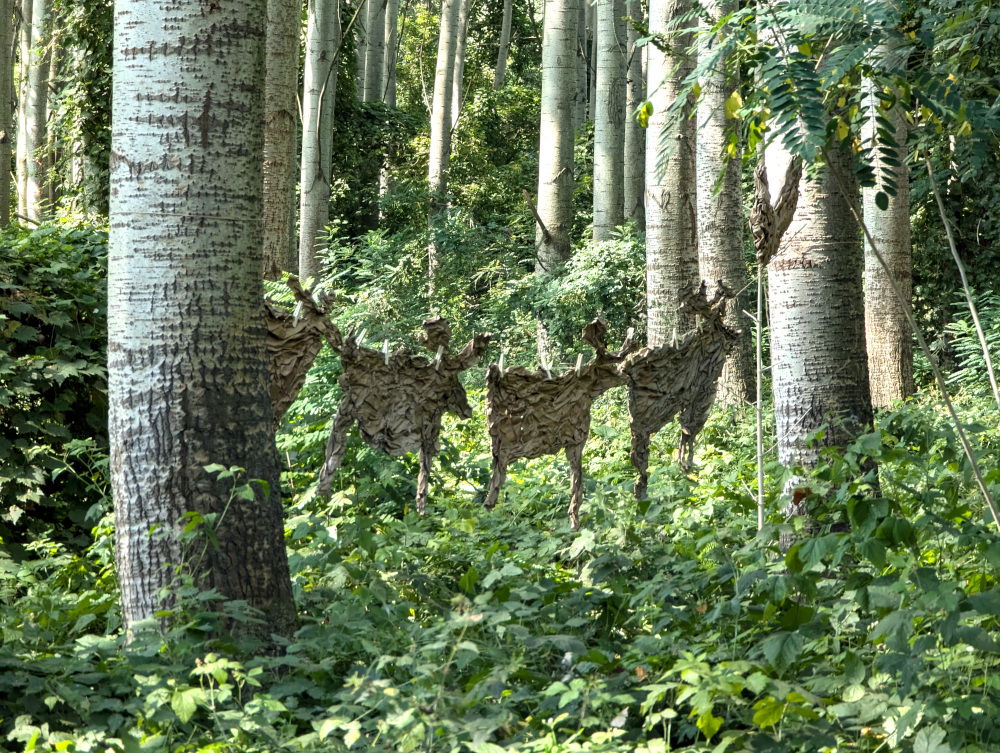Object
From the series “Flying Deer”
Place of creation: Great Island, Rácalmás, Hungary, 2024
Materials: wrapping paper, Danube water, Danube clay, wheat flour, rope, clothespins
The work was created using natural materials.
The project “Flying Deer” is inspired by Hungarian ethnographic traditions, in which the deer symbolizes a mediator between the human world and the spirit world. In mythology, the deer is often depicted as a being capable of moving between worlds and serving as a link between the earthly and the heavenly. This image of the deer as a mediator became the central theme of the project.
“Flying Deer” is a work about transitions, about the phenomenon of the hidden, and about the moment of creation. It reflects the multilayered nature of time and space, where myths and reality intertwine, creating a new perception of the present moment. The ephemerality of the object emphasizes the idea of temporality and the elusiveness of the moment, while its ecological nature testifies to a deep connection with nature and respect for its laws.
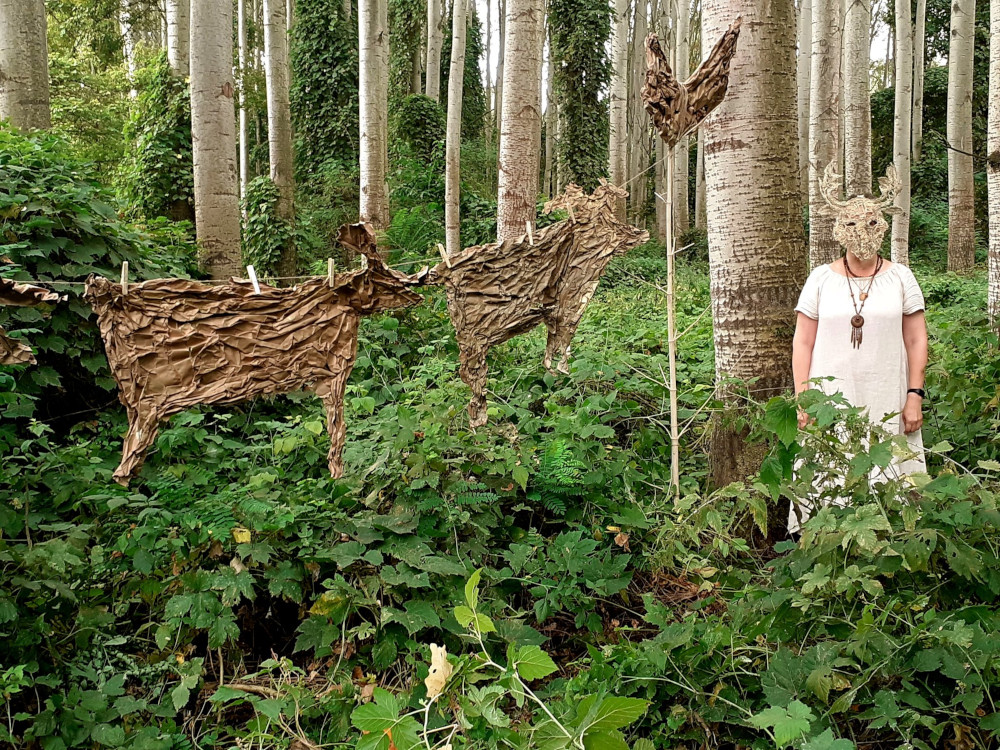
The object “Flying Deer” at the symposium in Rácalmás fits into the theme “JELEN — JELENÉS — JELEN|ÉS”, exploring and visualizing the multilayered state between the present, manifestation, and transition:
JELEN (The Present):
In the present moment, something symbolic and meaningful is created — the images of deer flying between sky and earth. This act symbolizes the here and now, a creative process that connects natural elements with cultural symbols.
JELENÉS (Manifestation):
The deer, materialized from a simple piece of paper, become a visible embodiment of legends and myths. Their airy silhouettes, as if caught mid-flight, embody the idea of making the invisible visible, the hidden apparent.
JELEN|ÉS (Transition and Interaction):
Suspended between trees, the deer symbolize the passage between different states — earth and sky, present and future. The moon-boat complements the image of a journey and connection between worlds, pointing to the cyclical and continuous processes in nature and culture. They exist in a state of “in-between” — between visible and invisible, real and illusory. Their presence embodies the transition from one state to another, and in this transition, the viewer plays an important role by activating the object through attention, making it meaningful. In this sense, “Flying Deer” are an embodiment of the transitional moment, a bridge between the visible world and the hidden world.
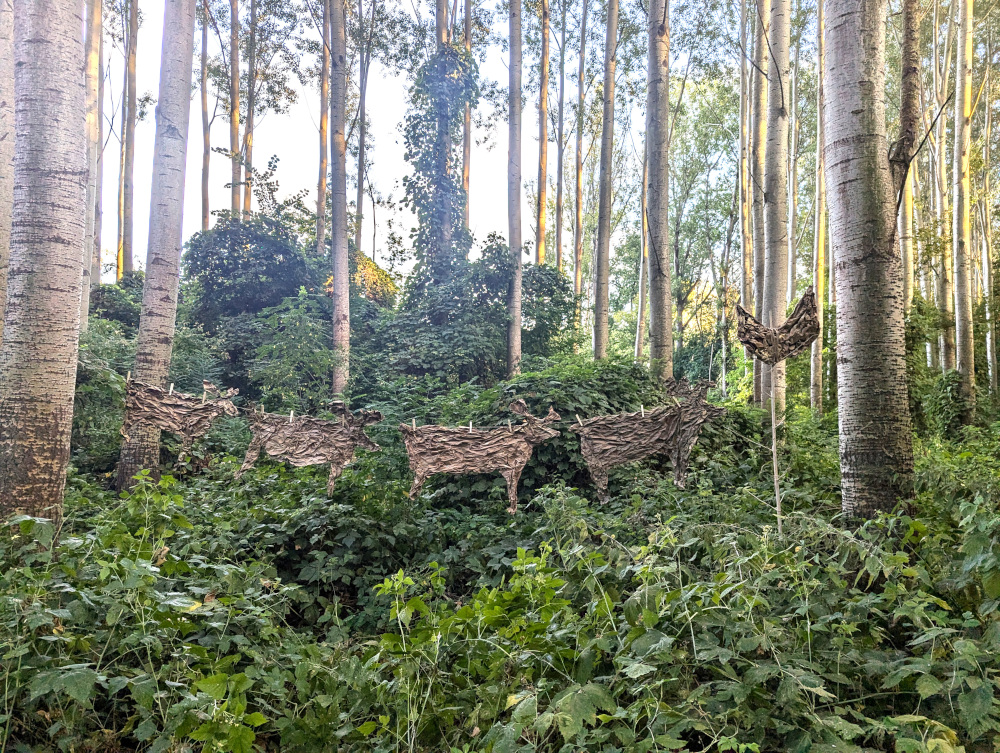
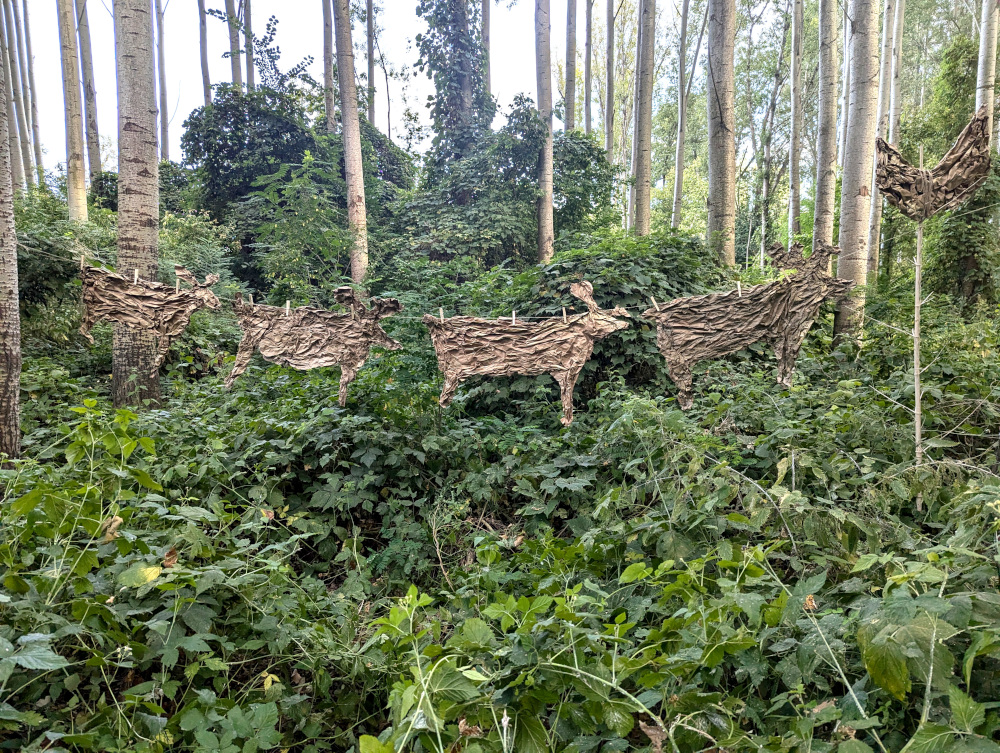
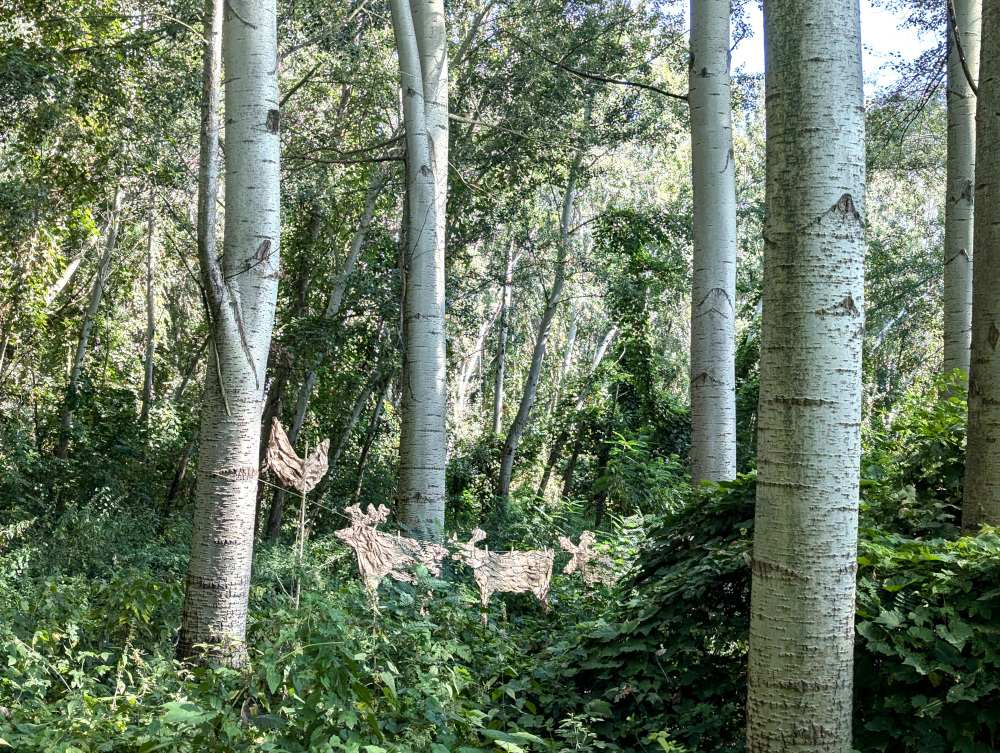
From the Author:
This project, in general, is about the constant movement and change surrounding us. The deer in this project symbolize a transitional state, showing how the material can disappear and become part of something deeper and unseen. These deer are temporary beings that become invisible as soon as nature takes its course. Thus, the viewer is invited to reflect on how everything around us is constantly changing and how we ourselves exist between different states and moments in life.
In creating this project, I aimed to convey the feeling of transition — a liminal state between worlds, symbolized by the deer in Hungarian mythology. Working with paper soaked in Danube water added an additional layer of significance — a connection to nature and to the river itself as a symbol of movement and passage. The deer, suspended between trees, embody the moment between life and death, material and spiritual, visible and invisible.
The “Flying Deer” project was conceived from the start as an ephemeral object, doomed to gradual decay. Within a short time, the deer figures began to lose their shape under the influence of wind, moisture, and the natural processes occurring in the forest. After rain, the deer almost completely disappeared, leaving only faint traces of their existence. This can be interpreted as a symbolic acceptance of the object by the spirits of nature. The deer, made from natural materials, seemed to be returned to nature in the process of their decomposition.
It is interesting to note that the word “JELEN” in Croatian means “deer.” Since the symposium’s location also contains Croatian linguistic roots, I consider it appropriate to use this implicit connection to support the project. The symposium took place in the town of Rácalmás, whose name has both Croatian and Hungarian roots. In Croatian, “jelen” means “deer,” while in Hungarian, “jelen” translates as “the present.” This linguistic coincidence highlights a cultural intersection and symbolic link between the symposium’s location and the idea behind my object. Using the Croatian word “jelen” in the context of our project “Flying Deer” is justified and meaningful, as it not only matches the Hungarian spelling but also adds an extra layer of meaning, connecting natural imagery and cultural contexts with the symposium theme “JELEN — JELENÉS — JELEN|ÉS.”
How I Made the Deer (A Story with Pictures on Facebook)



